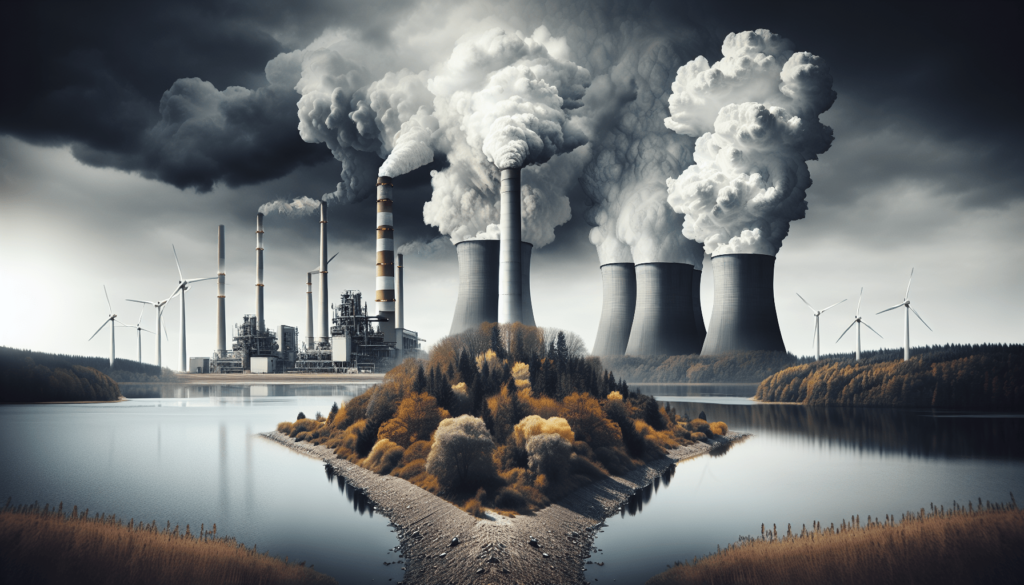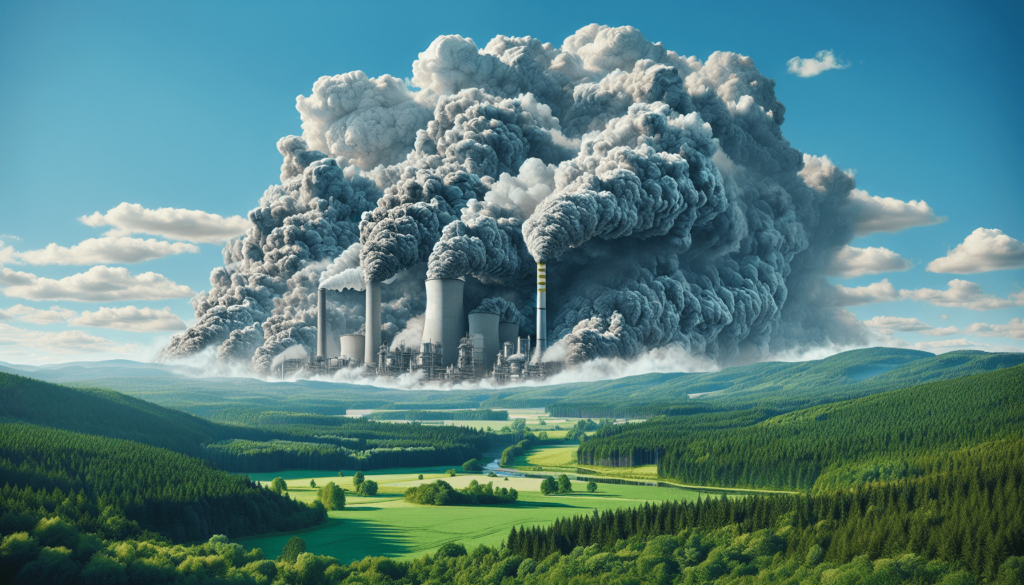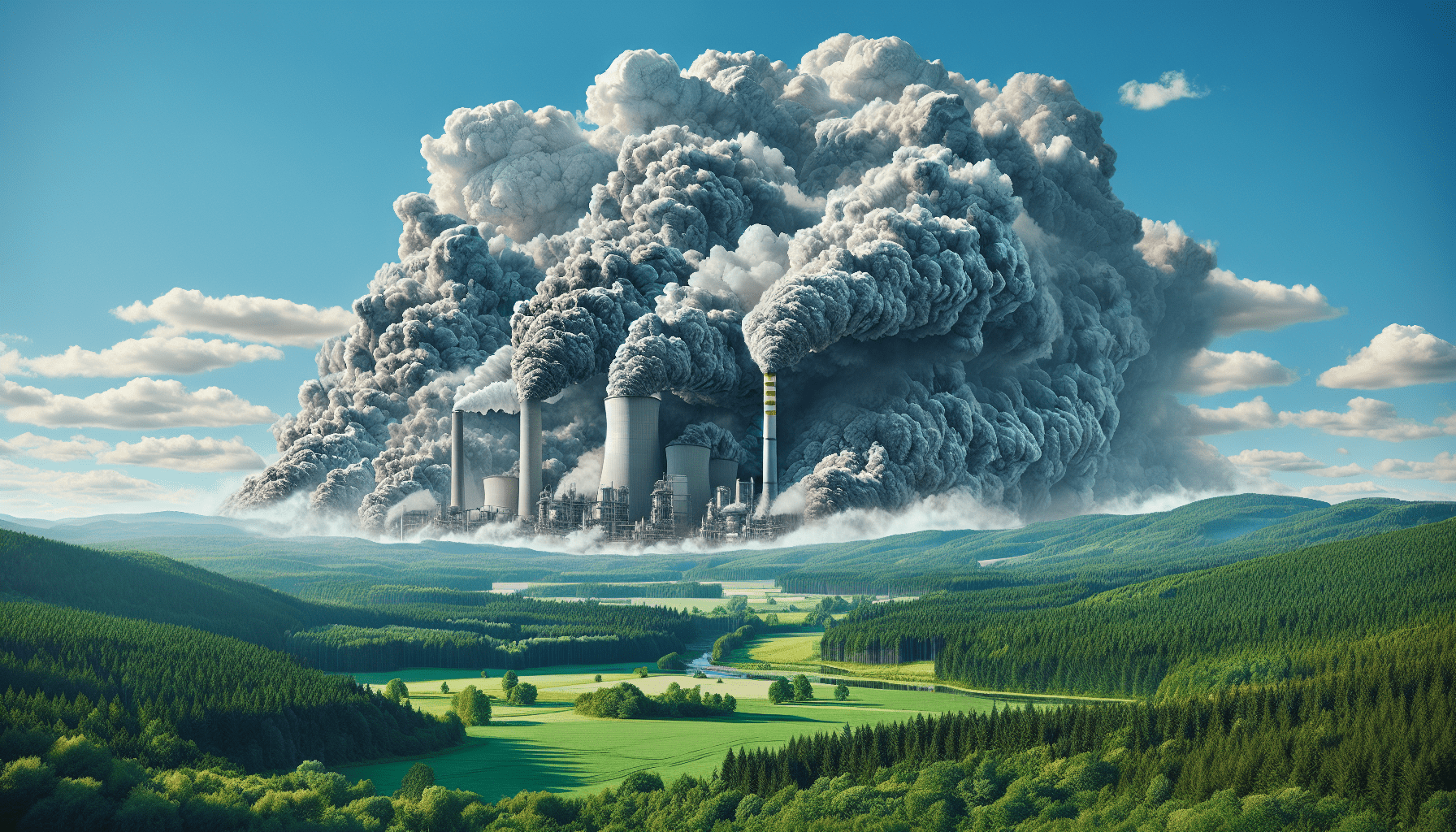It’s no secret that the world we live in heavily relies on energy. From powering our homes and offices to fueling transportation, energy is an integral part of our daily lives. However, it’s important to understand the environmental consequences that come with the use of traditional energy sources. In this article, we will explore the various ways in which traditional energy sources, such as fossil fuels and nuclear power, impact our environment. By shedding light on this issue, we aim to encourage individuals and communities to consider alternative energy options and work towards a more sustainable future.
Air Pollution
Greenhouse Gas Emissions
Traditional energy sources such as coal, oil, and natural gas are major contributors to greenhouse gas emissions. When these fuels are burned in power plants and factories, they release carbon dioxide (CO2), methane (CH4), and nitrous oxide (N2O) into the atmosphere. These greenhouse gases trap heat and contribute to the phenomenon known as global warming. The excessive release of these gases is linked to the increasing temperatures and climate changes we are currently experiencing.
Particulate Matter
Burning fossil fuels for energy also releases particulate matter into the air. These tiny particles, often referred to as PM2.5 and PM10, can have significant health impacts when inhaled. PM2.5 particles are especially dangerous as they can penetrate deep into the lungs and even enter the bloodstream. Prolonged exposure to these particles can lead to respiratory problems, cardiovascular diseases, and even premature death.
Nitrogen Oxides
The combustion of fossil fuels also releases nitrogen oxides (NOx) into the atmosphere. High levels of NOx contribute to the formation of smog and ground-level ozone, which can be harmful to both human health and the environment. Elevated levels of NOx can trigger respiratory problems, especially in individuals with pre-existing conditions such as asthma. Additionally, nitrogen oxides can contribute to the acidification of soil and water bodies, further impacting ecosystems.
Water Pollution
Thermal Pollution
Traditional energy sources often require large amounts of water for their cooling processes. This water is withdrawn from rivers, lakes, or oceans and then released back into the environment at higher temperatures. This thermal pollution can disrupt aquatic ecosystems, causing harm to fish and other aquatic organisms. The elevated water temperatures decrease oxygen levels, making it difficult for aquatic life to survive.
Chemical Pollution
The extraction, processing, and transportation of traditional energy sources can result in chemical pollution. Oil spills from drilling platforms or transportation vessels can contaminate water bodies, harming marine life and coastal ecosystems. Other chemicals used in the production of energy, such as sulfuric acid or heavy metals, can also find their way into water sources, leading to long-lasting environmental damage.
Oil Spills
One of the most severe consequences of traditional energy sources is oil spills. Accidental oil spills can happen during offshore drilling, transportation, or storage. These spills not only harm marine life but also have devastating effects on coastal ecosystems and local communities. The spilled oil can smother and kill wildlife, damage habitats, and contaminate water, making it unsafe for both humans and animals.

Land Degradation
Mining
The extraction of traditional energy sources often requires extensive mining activities. Large-scale mining operations can result in the destruction of natural habitats and ecosystems. They can lead to soil erosion, loss of biodiversity, and contamination of water bodies through the release of harmful chemicals. Additionally, mining activities require the use of heavy machinery, which can further disturb the land and contribute to deforestation.
Deforestation
Traditional energy sources such as coal and timber contribute to deforestation. The clearing of forests for mining, logging, or to make way for energy infrastructure not only destroys valuable ecosystems but also diminishes the planet’s ability to absorb carbon dioxide through photosynthesis. Deforestation leads to habitat loss and the displacement of countless plant and animal species, further exacerbating the loss of biodiversity.
Soil Contamination
The extraction and processing of traditional energy sources can result in soil contamination through the release of hazardous chemicals and waste materials. The toxic substances from mining operations or accidental spills can seep into the soil, making it unsuitable for agriculture and posing a risk to human and animal health. Soil contamination can also lead to the death of microorganisms that play a vital role in maintaining healthy soil ecosystems.
Climate Change
Increasing Global Temperature
The burning of fossil fuels for energy production is a significant driver of climate change. The release of greenhouse gases, particularly carbon dioxide, traps heat in the atmosphere and contributes to the warming of the planet. Rising global temperatures have far-reaching consequences, including melting ice caps, more frequent and severe heatwaves, and the disruption of ecosystems. These changes threaten both human and wildlife populations.
Extreme Weather Events
Climate change caused by traditional energy sources is linked to an increase in extreme weather events such as hurricanes, droughts, and floods. The warming of the oceans and atmosphere provides more energy to fuel these extreme events, leading to devastating consequences for communities and ecosystems. Infrastructure damage, loss of lives, and disruptions to essential services are some of the impacts of extreme weather events.
Melting Ice Caps
The burning of fossil fuels contributes to the melting of ice caps and glaciers worldwide. As greenhouse gases accumulate in the atmosphere, they cause the temperature to rise, leading to the melting of ice at both poles and on glaciers. The melting ice caps not only contribute to rising sea levels but also disrupt ecosystems that rely on the stability of polar ice. The loss of ice has significant implications for wildlife, such as polar bears and penguins, that depend on these habitats for survival.

Habitat Destruction
Loss of Biodiversity
Traditional energy sources play a significant role in the loss of biodiversity. Deforestation, land degradation, and habitat destruction caused by mining and energy infrastructure development result in the displacement and extinction of countless plant and animal species. As habitats are destroyed, many species lose their homes and are unable to survive in the altered environment, leading to a loss of biodiversity.
Disruption of Ecosystems
The extraction and use of traditional energy sources often disrupt ecosystems due to their heavy environmental footprint. The loss of key species in ecosystems can have a cascading effect, leading to imbalances in predator-prey relationships and the overall health of the ecosystem. Disruption of ecosystems also diminishes the ability of these natural systems to provide vital services such as clean air, water, and soil.
Deforestation
Deforestation, driven in part by the need for energy sources like timber and palm oil, contributes significantly to habitat destruction. Large-scale clearing of forests for energy production not only reduces biodiversity but also releases significant amounts of stored carbon dioxide into the atmosphere. This deforestation disrupts ecosystems, destroys wildlife habitats, and contributes to climate change.
Acid Rain
Sulfur Dioxide Emissions
The burning of fossil fuels, especially coal, releases sulfur dioxide (SO2) into the atmosphere. When SO2 combines with water vapor, it forms sulfuric acid, which falls back to the ground as acid rain. Acid rain can have detrimental effects on forests, lakes, and rivers. It can damage plant life, make water bodies too acidic for aquatic organisms to survive, and cause building materials and infrastructure to deteriorate more rapidly.
Nitrogen Oxides Emissions
Alongside sulfur dioxide emissions, the burning of fossil fuels also releases nitrogen oxides (NOx) into the atmosphere. When combined with water, NOx forms nitric acid, another component of acid rain. Nitric acid can have similar impacts to sulfuric acid, leading to forest decline, freshwater ecosystem degradation, and the corrosion of infrastructure.
Effects on Aquatic Life
Acid rain resulting from the emissions of sulfur dioxide and nitrogen oxides can have severe consequences for aquatic life. The increased acidity of water bodies can reduce the availability of food sources for fish and other aquatic organisms. It can also cause direct harm to their respiratory systems, reproductive abilities, and overall health. Acid rain can further amplify the negative impacts of water pollution, contributing to the decline and loss of vulnerable species.
Nuclear Waste
Radioactive Materials
Nuclear energy, while being a low greenhouse gas emission alternative, presents its own environmental challenges. One of the most pressing issues is the management and disposal of radioactive waste. Radioactive materials produced during nuclear energy production can remain hazardous to living organisms for thousands of years. Proper storage and containment of these materials are essential to prevent contamination of the environment.
Long-Term Storage Challenges
The safe long-term storage of nuclear waste is a significant challenge. Radioactive materials must be stored in secure facilities that prevent leakage and the release of radiation into the surrounding environment. Developing effective storage solutions and ensuring their long-term integrity requires careful planning, monitoring, and investment.
Environmental Contamination
Accidents, leaks, or improper disposal of nuclear waste can lead to severe environmental contamination. The release of radioactive materials into the air, soil, or water can have disastrous consequences for ecosystems and human health. Contaminated areas may become uninhabitable and require extensive clean-up efforts, which can be costly, time-consuming, and pose significant risks to those involved.
Noise Pollution
Construction and Operation of Power Plants
The construction and operation of power plants, particularly those utilizing fossil fuels, can contribute to significant noise pollution. Heavy machinery, large-scale construction activities, and the continuous running of power generation equipment generate high levels of noise in the vicinity. This noise pollution can negatively impact nearby communities, causing annoyance, sleep disturbances, and potential health issues.
Transportation of Fuels
The transportation of traditional energy sources, such as coal or oil, also contributes to noise pollution. Trucks, trains, and ships involved in the transportation process generate noise from engine operation and cargo handling. Communities along transportation routes may be exposed to constant noise, impacting their quality of life and potentially harming local wildlife.
Impact on Wildlife
Noise pollution from traditional energy sources can adversely affect wildlife populations. Animals reliant on acoustic signals for communication or navigation, such as birds and marine mammals, may struggle to function effectively in noisy environments. Increased noise levels can disrupt mating rituals, foraging behaviors, and migration patterns, leading to long-term effects on wildlife populations and the overall health of ecosystems.
Resource Depletion
Limited Availability of Fossil Fuels
Traditional energy sources, particularly fossil fuels like coal, oil, and natural gas, are finite resources. As global demand continues to rise, the extraction and consumption of these fuels deplete the Earth’s limited reserves. Eventually, these resources will become increasingly costly and difficult to access, posing significant economic challenges.
Mining for Coal and Uranium
The mining of coal and uranium, two prevalent traditional energy sources, contributes to resource depletion. As mining operations expand to access remaining deposits, environmental impacts increase, including land degradation, water pollution, and habitat destruction. Moreover, the extraction process for these resources consumes vast amounts of energy, further exacerbating the environmental impact.
Water Scarcity
The extraction and processing of traditional energy sources require substantial amounts of water. As freshwater resources become scarcer, due to climate change and other factors, the competition for water between energy production, agriculture, and human consumption intensifies. Water scarcity can have severe consequences for communities, ecosystems, and food production, making it imperative to prioritize sustainable energy alternatives.
Health Impacts
Respiratory Diseases
Exposure to air pollution resulting from traditional energy sources can have significant impacts on respiratory health. The inhalation of particulate matter, nitrogen oxides, and other pollutants can contribute to the development or exacerbation of respiratory diseases such as asthma, bronchitis, and chronic obstructive pulmonary disease (COPD). Children, the elderly, and people with pre-existing respiratory conditions are particularly vulnerable to the adverse effects.
Cancer
Certain emissions from traditional energy sources, such as benzene or polycyclic aromatic hydrocarbons (PAHs), are known carcinogens. Prolonged exposure to these substances can increase the risk of developing various types of cancer, including lung, bladder, and liver cancer. Reducing exposure to these pollutants through the transition to cleaner energy sources is crucial for minimizing cancer risks.
Neurological Disorders
Air pollution resulting from traditional energy sources can also have detrimental effects on neurological health. Fine particulate matter (PM2.5) and toxic chemicals present in polluted air can enter the bloodstream, cross the blood-brain barrier, and potentially cause neurological damage. Long-term exposure to air pollution has been linked to an increased risk of neurodegenerative diseases such as Alzheimer’s and Parkinson’s disease, as well as cognitive impairments in children.
In conclusion, traditional energy sources have significant environmental impacts across multiple dimensions. From air and water pollution to land degradation and habitat destruction, the consequences of relying on fossil fuels and other conventional energy sources are evident. The transition to cleaner, sustainable alternatives is vital for mitigating these impacts and ensuring a healthier future for both the planet and its inhabitants.

